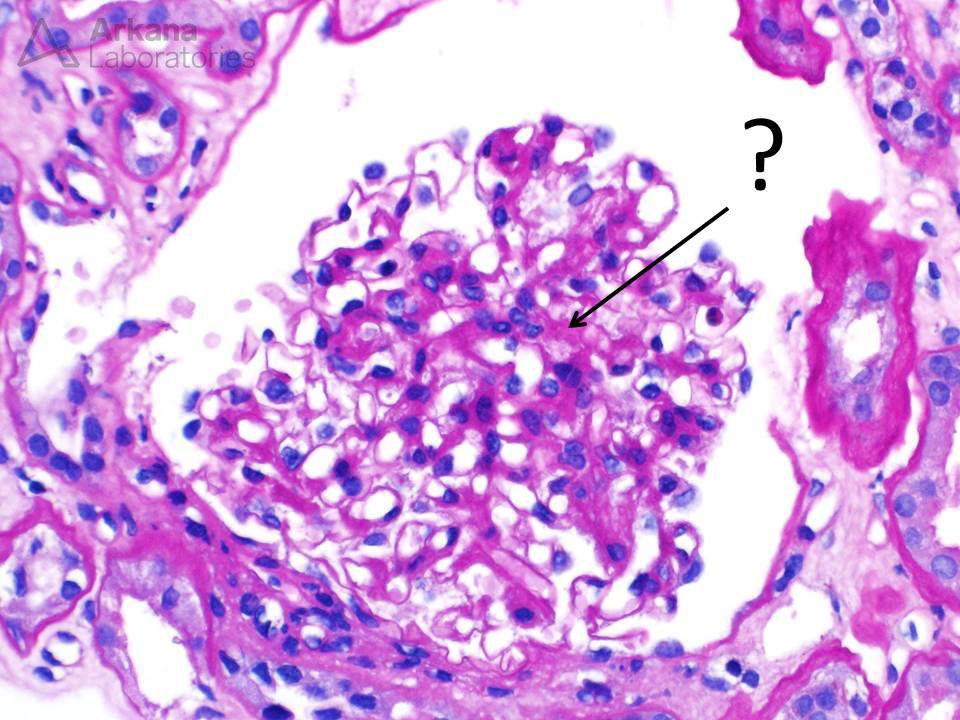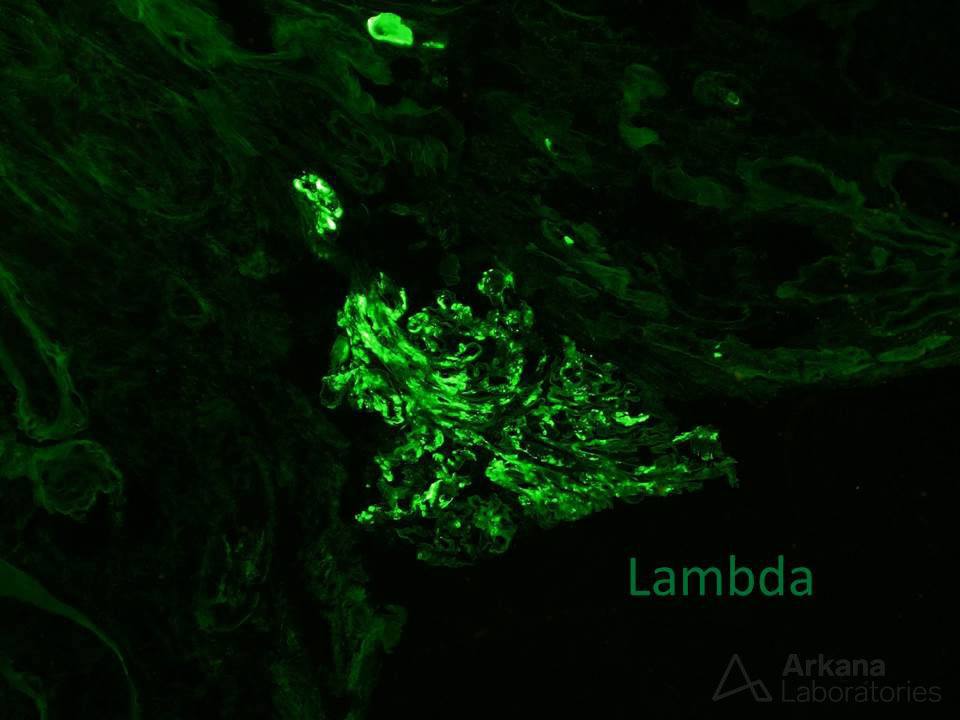This case illustrates the utility of immunohistochemical staining for DNAJB9, a recently described biomarker for fibrillary glomerulopathy (see reference). The renal biopsy is taken from a 68-year-old man with a history of cirrhosis (cause unknown) who presents with mild microscopic hematuria, non-nephrotic range proteinuria, and chronic renal failure. Glomeruli show diffuse mild mesangial matrix expansion. Immunofluorescence shows granular mesangial IgA (2+) and smudgy mesangial and capillary wall IgG (2+) staining. Electron microscopy (not shown) shows both immune complex-type and fibrillary deposits involving glomerular capillary basement membranes and mesangium. Immunohistochemical staining for DNAJB9 shows mesangial staining.
Although IgA immunofluorescence staining may be observed in a subset of patients with fibrillary glomerulopathy, the presence of granular positivity and distinct immune complex-type deposits by EM in this case argue in favor of dual pathology: fibrillary glomerulopathy and IgA nephropathy.
Reference:
Nasr SH, Vrana JA, Dasari S, Bridoux F, Fidler ME, Kaaki S, Quellard N, Rinsant A, Goujon JM, Sethi S, Fervenza FC, Cornell LD, Said SM, McPhail ED, Herrera Hernandez LP, Grande JP, Hogan MC, Lieske JC, Leung N, Kurtin PJ, Alexander MP. DNAJB9 Is a Specific Immunohistochemical Marker for Fibrillary Glomerulonephritis. Kidney Int Rep. 2017 Aug 8;3(1):56-64. PMID: 29340314
Quick note: This post is to be used for informational purposes only and does not constitute medical or health advice. Each person should consult their own doctor with respect to matters referenced. Arkana Laboratories assumes no liability for actions taken in reliance upon the information contained herein.






